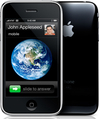The Android operating system (OS) continued to shake up the U.S. mobile phone market in the first quarter (Q1) of 2010, moving past Apple to take the number-two position among smartphone operating systems, according to The NPD Group (http://www.npd.com), a market research company.
NPD’s wireless market research reveals that based on unit sales to consumers last quarter the Android operating system moved into second position at 28% behind RIM’s OS (36%) and ahead of Apple’s OS (21%).
“As in the past, carrier distribution and promotion have played a crucial role in determining smartphone market share,” says Ross Rubin, executive director of industry analysis for NPD. “In order to compete with the iPhone, Verizon Wireless has expanded its buy-one-get-one offer beyond RIM devices to now include all of their smartphones.”
Strong sales of the Droid, Droid Eris, and Blackberry Curve via these promotions helped keep Verizon Wireless’s smartphone sales on par with AT&T in Q1. According to NPD’s Mobile Phone Track, smartphone sales at AT&T comprised nearly a third of the entire smartphone market (32%), followed by Verizon Wireless (30%), T-Mobile (17%) and Sprint (15%).
“Recent previews of BlackBerry 6, the recently announced acquisition of Palm by HP, and the pending release of Windows Phone 7 demonstrates the industry’s willingness to make investments to address consumer demand for smartphones and other mobile devices,” Rubin says. “Carriers continue to offer attractive pricing for devices, but will need to present other data-plan options to attract more customers in the future.”
The continued popularity of messaging phones and smartphones resulted in slightly higher prices for all mobile phones, despite an overall drop in the number of mobile phones purchased in the first quarter. The average selling price for all mobile phones in Q1 reached US$88, which is a 5% increase from Q1 2009. Smartphone unit prices, by comparison, averaged $151 in Q1 2010, which is a 3% decrease over the previous year.


